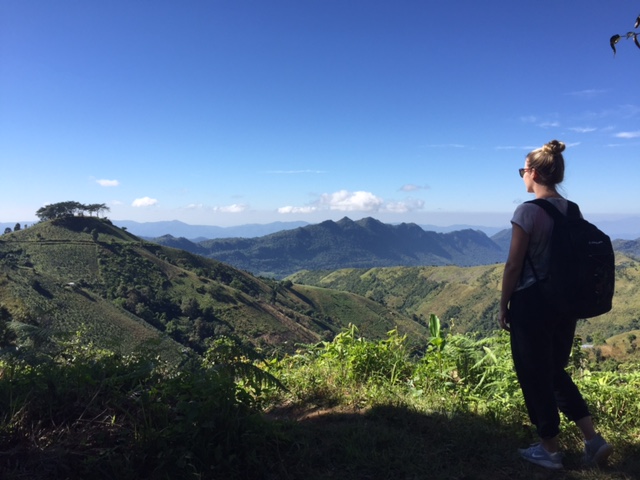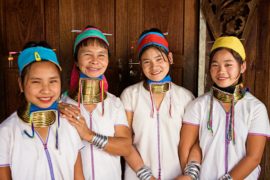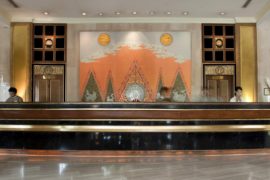Since the time of British Raj the picturesque hill stations of Myanmar have served as summer retreats for those looking to escape the heat and humidity of the countries rainy (aka green) season. The charming hill stations, scattered at high altitudes throughout the hills of central Myanmar, experience relatively cool weather throughout the year and only sporadic rainfall during the green season. Discovery DMC organizes trips to all of the destinations described in this post, so do not hesitate to contact us and let us help to plan your trip to Myanmar this season!
Pwin Oo Lwin – Situated at an elevation of 1070m, Pwin Oo Lwin started as a military outpost next to a small Shan village along the Lashio-Mandalay trail. Sitting between Nawnghkio and Mandalay, the military outpost was declared a town in 1896. After experiencing the year-long cool climate, the town became a hill station and the summer destination for British Burma. The government and military officials would come to the town during the hot season of Yangon to escape the stifling heat and humidity.
Today, the town continuous to be a popular retreat for both locals and foreigners and also serves an important market center for goods from around Shan and Kachin State. The town also maintains much of its old colonial charm with much of the architecture of the time still intact. One of the town’s main sites is the Kandawgyi Botanical Gardens. Modeled after the Kew Gardens in England, the garden covers over 400 acres of land and contains an amazing variety of indigenous plants and foreign species. Although forty-two of its acres are a protected forest area, the gardens are available for the public to walk among the beautifully manicured gardens and colorful flower beds
Departing from Pwin Oo Lwin to Hsipaw, travelers can also experience one of the most spectacular train rides in all Asia. The ride is special experience because of the Gokteik Viaduct railway bridge that spans across the 300m deep Gokteik Gorge. It’s the highest bridge in all Myanmar. Completed in 1901, the steel construction was designed by the Pennsylvania Steel Company from the United States. The steel was also shipped from the United States.
Hsipaw
Hsipaw is a small town with relaxed pace of life situated 200 kilometers North East from Mandalay. Situated on the mighty Shan hills it is a perfect spot for trekking and exploring the ethical villages that are dotting the surrounding highlands. The surrounding nature also hosts several natural hot springs that are nice spots to take a bath local style.
There are also plenty of Pagodas and old traditional houses to admire and one of the must see place is the old Shan princes palace at the northern end of town. The last Shan prince disappeared during military coup in 1962 and today his nephew and his wife are taking care of the mansion and gladly give insights of the History of Shan state.
Hsipaw and the surrounding areas are mainly inhabited by Shan, Palaung, Pao-O ethnic minorities. The colorful main market is a place worth visiting with all village people gathering to trade their local goods. The main resource of income for the rural villages is tea cultivation and people are still living in simple conditions with strong traditions. Locals are friendly and welcome tourists with curiosity, but for better insight of their lives we recommend hiring a Palaung or Shan guide.
Kalaw – Kalaw was once a colonial British hill station, now has become a post for travelers who want to trek out into Shan State. On the western edge of the Shan Plateau, it’s 70km west of Taunggyi, halfway down the Thazi-Taunggyi Road. Because of its average elevation of 1320 meters, the general climate around the town is cooler and provides a brief reprieve from the warmer, humid heat in the lower areas.
Within Kalaw, there are a few things to see like the bustling local market, the Aung Chang Tha Zedi stupa (sometimes called Aung Chang) covered with silver and gold glass mosaics, and the Hnee Pagoda that contains a 500-year-old Buddha made of bamboo. There is even a church in the town called Christ the King Church, constructed during colonial rule. The Shan food of the town is diversified with influences of Indian and Nepali flair because of the Indian and Nepali rail workers who stayed in the town during British rule.
From Kalaw, adventurers can venture out into the lush forests and visit the ethnic minority villages of the Danu, Palaung, and the Pa-O. The small town is also the starting point for treks to Inle Lake to the east. Such treks can last from two to five days depending on how many visits to villages the group makes. The terrain is easy to moderate, going through an ongoing rich panorama of rice paddy fields, pine forests, bamboo groves, and tea plantations.
Any trek from Kalaw is sure to have some spectacular views of the countryside, whether it be forest or farmland. Some paths to the villages are hidden, while others are used daily by the villagers who effortlessly walk by with a basket of tea or rice on their head. Most of the villages are only accessible on foot, which not only helps the environment by not using motorbikes or trucks, but it also ensures that the serenity of the villages stays intact, giving visitors lasting, peaceful impressions that they can relive for years to come.







Comments are closed.